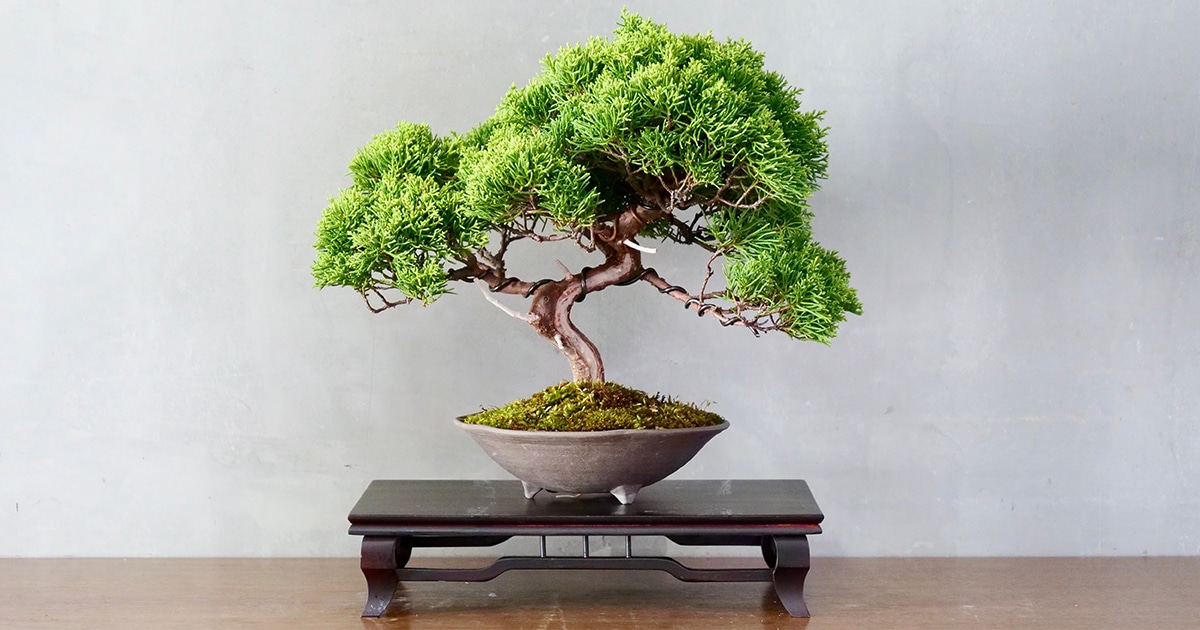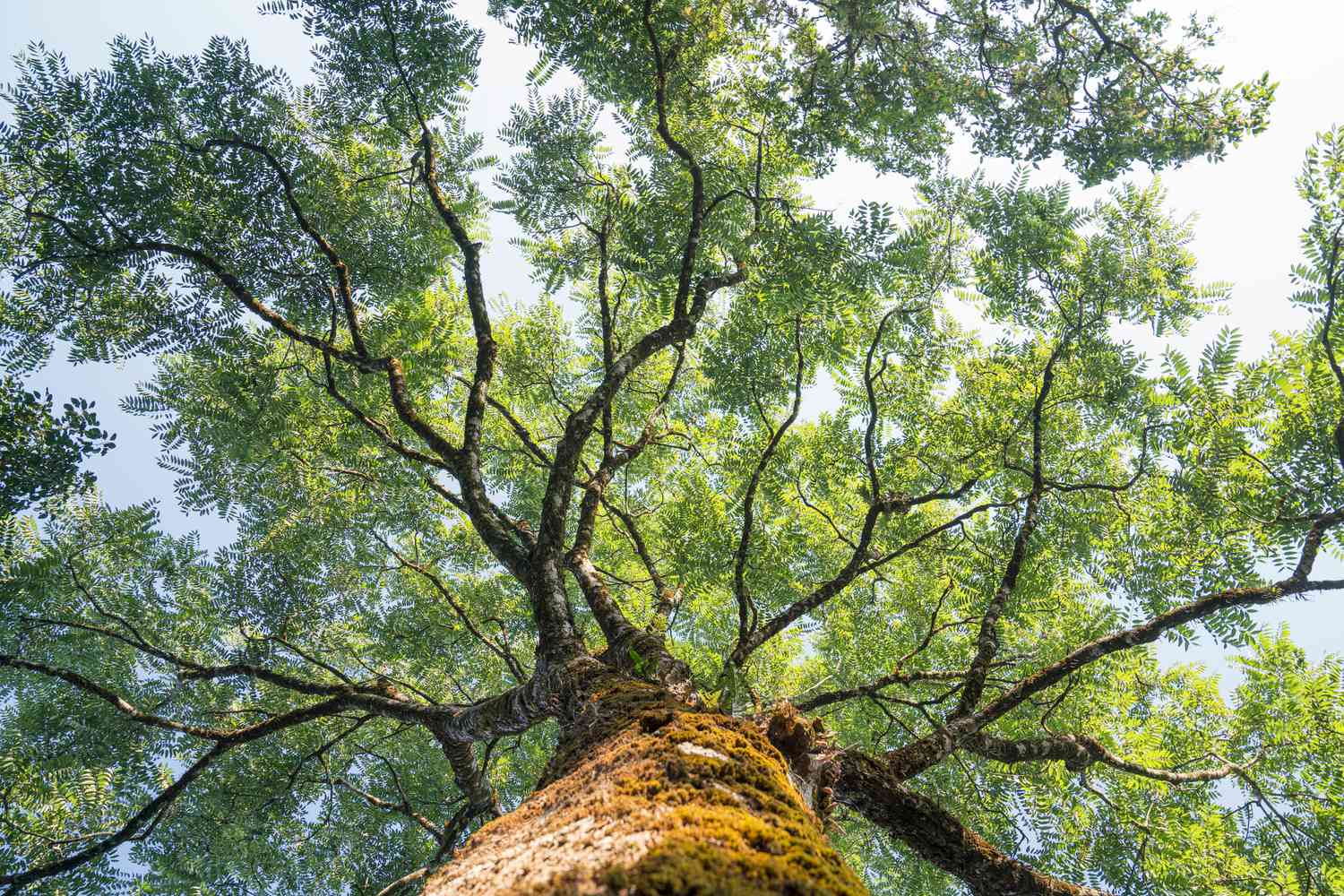Home>Types of Gardening>Ornamental Gardening>What Is The Most Expensive Bonsai Tree


Ornamental Gardening
What Is The Most Expensive Bonsai Tree
Modified: January 22, 2024
Discover the world of ornamental gardening and learn about the most expensive bonsai tree. Explore the art of cultivating and maintaining these miniature masterpieces.
(Many of the links in this article redirect to a specific reviewed product. Your purchase of these products through affiliate links helps to generate commission for Chicagolandgardening.com, at no extra cost. Learn more)
Table of Contents
Introduction
Welcome to the enchanting world of bonsai trees, where nature meets artistry in the most captivating way. Bonsai, which translates to "planted in a container" in Japanese, is an ancient horticultural practice that involves cultivating miniature trees in containers, echoing the shape and scale of full-sized trees. These living masterpieces are not only a testament to the patience and dedication of their caretakers but also a reflection of the harmony between humanity and nature.
Bonsai trees have captivated enthusiasts for centuries, offering a serene escape into a world where time seems to stand still. The allure of these miniature marvels lies in their ability to encapsulate the essence of nature within a confined space, evoking a sense of tranquility and contemplation.
As we delve into the realm of bonsai trees, we will explore the fascinating history behind these diminutive yet majestic creations, uncover the various factors that contribute to the pricing of bonsai trees, and ultimately unveil the most expensive bonsai tree, a testament to the unparalleled artistry and craftsmanship that defines this ancient tradition. So, let's embark on this journey to discover the captivating world of bonsai trees and unravel the mysteries behind their allure and value.
History of Bonsai Trees
The art of cultivating bonsai trees traces its origins back to ancient China, where it was initially practiced as a form of penjing, the Chinese art of creating miniature landscapes. This tradition eventually found its way to Japan, where it evolved into the art of bonsai that we recognize today. The meticulous cultivation and shaping of these miniature trees reflect the profound influence of Zen Buddhism and the reverence for nature in Japanese culture.
During the Kamakura period (1185–1333) in Japan, bonsai cultivation became intertwined with the principles of Zen Buddhism, emphasizing harmony, simplicity, and the appreciation of natural beauty. Bonsai trees were cultivated as objects of meditation and were often incorporated into the design of Zen gardens, serving as a source of contemplation and spiritual reflection.
Over the centuries, the art of bonsai continued to flourish, with dedicated practitioners refining and passing down their techniques through generations. Bonsai cultivation became a revered art form, with each tree embodying the skill and vision of its caretaker. The aesthetic principles of bonsai, such as asymmetry, balance, and proportion, reflect the deep respect for nature and the pursuit of harmony in Japanese art and culture.
Today, the art of bonsai has transcended cultural boundaries and has garnered enthusiasts worldwide. The timeless allure of these miniature trees continues to captivate individuals, serving as a source of inspiration and a tangible link to the natural world.
Factors Affecting Bonsai Tree Prices
The pricing of bonsai trees is influenced by a myriad of factors, each contributing to the unique value and allure of these living works of art. Understanding these factors provides insight into the intricate world of bonsai cultivation and appreciation.
- Age and Maturity: One of the primary determinants of a bonsai tree’s value is its age and the time it has been meticulously cultivated. Older, more mature trees, which exhibit intricate and refined forms, often command higher prices due to the years of care and artistry invested in their development.
- Species and Rarity: The species of the tree significantly impacts its value, with certain species prized for their suitability for bonsai cultivation and their inherent aesthetic qualities. Additionally, rare and unique species that are challenging to cultivate as bonsai trees may command premium prices due to their scarcity and distinctive characteristics.
- Artistic Quality: The artistic merit of a bonsai tree, including its overall design, balance, and visual appeal, greatly influences its value. Trees that exhibit exceptional artistry, such as intricate branch formations, naturalistic movement, and well-developed root systems, are highly sought after by collectors and enthusiasts.
- Training and Styling: The meticulous training and shaping of a bonsai tree require skill, patience, and a deep understanding of horticulture and aesthetics. Trees that have undergone extensive and refined training, resulting in harmonious and evocative forms, often command higher prices due to the expertise and effort invested in their cultivation.
- Historical Significance: Bonsai trees with a documented history or lineage, especially those associated with renowned bonsai masters or significant cultural events, may carry historical significance that elevates their value and desirability among collectors and connoisseurs.
- Container and Presentation: The choice of container or pot, as well as the overall presentation of the bonsai tree, contributes to its aesthetic impact and value. Fine-quality, handcrafted containers and tasteful display arrangements enhance the overall appeal of the bonsai, reflecting the attention to detail and artistry of the presentation.
These factors collectively contribute to the intricate tapestry of bonsai tree pricing, reflecting the artistry, heritage, and natural beauty encapsulated within each living masterpiece.
The Most Expensive Bonsai Tree
Among the remarkable array of bonsai trees that have captured the attention of enthusiasts and collectors, one particular specimen stands out as a testament to the extraordinary value and reverence accorded to these living works of art. The most expensive bonsai tree, known as the “Shunkaen Kimura Maple,” commands an awe-inspiring price tag that reflects its exceptional rarity, age, and unparalleled artistry.
The “Shunkaen Kimura Maple” is a Japanese maple (Acer palmatum) bonsai tree that was meticulously cultivated and refined by master bonsai artist Kunio Kobayashi. This extraordinary specimen, with its gracefully contorted branches and delicate foliage, embodies the timeless beauty and elegance of mature maple trees, encapsulated within a diminutive form that evokes a sense of wonder and tranquility.
What sets the “Shunkaen Kimura Maple” apart as the most expensive bonsai tree is its remarkable age and provenance. This venerable tree is estimated to be over 300 years old, bearing witness to centuries of history and embodying the enduring spirit of nature. Its lineage can be traced back through generations, further enhancing its historical and cultural significance.
The artistic quality and meticulous care invested in the cultivation of the “Shunkaen Kimura Maple” are evident in every aspect of its form and presentation. The harmonious balance of its branches, the graceful movement of its trunk, and the exquisite refinement of its foliage reflect the consummate skill and vision of its caretaker, elevating it to the pinnacle of bonsai artistry.
Furthermore, the “Shunkaen Kimura Maple” is housed in a stunning, handcrafted container that complements and enhances its natural beauty, underscoring the attention to detail and artistry applied to its presentation. This exquisite pairing of tree and container creates a captivating visual harmony, further amplifying the tree’s intrinsic value and allure.
While the exact price of the “Shunkaen Kimura Maple” remains a closely guarded secret, it is rumored to have fetched a staggering sum, solidifying its status as the most expensive bonsai tree in the world. This remarkable specimen serves as a poignant reminder of the enduring legacy and profound beauty encapsulated within the art of bonsai, transcending time and captivating the hearts and imaginations of all who encounter it.
Conclusion
The captivating world of bonsai trees beckons us to embark on a journey of discovery and wonder, where the timeless artistry of nature intertwines with human ingenuity and dedication. From its ancient origins in China to its evolution into the revered art form of bonsai in Japan, the history of these miniature marvels reflects a profound reverence for the natural world and the pursuit of harmony and beauty.
As we explore the factors that influence the pricing of bonsai trees, from the age and species of the tree to the artistry and historical significance it embodies, we gain a deeper appreciation for the intricate tapestry of value woven into each living masterpiece. The most expensive bonsai tree, the “Shunkaen Kimura Maple,” stands as a testament to the enduring allure and unparalleled artistry of these living treasures, embodying centuries of history and the consummate skill of its caretaker.
Ultimately, the world of bonsai trees invites us to pause and contemplate the profound beauty and tranquility encapsulated within these diminutive yet majestic creations. It serves as a poignant reminder of the delicate balance between humanity and nature, and the enduring legacy of artistry and reverence that transcends time and cultural boundaries.
As we partake in the timeless enchantment of bonsai trees, may we find inspiration in the meticulous craftsmanship and enduring beauty of these living works of art, and carry forward the spirit of harmony and contemplation that they evoke.


